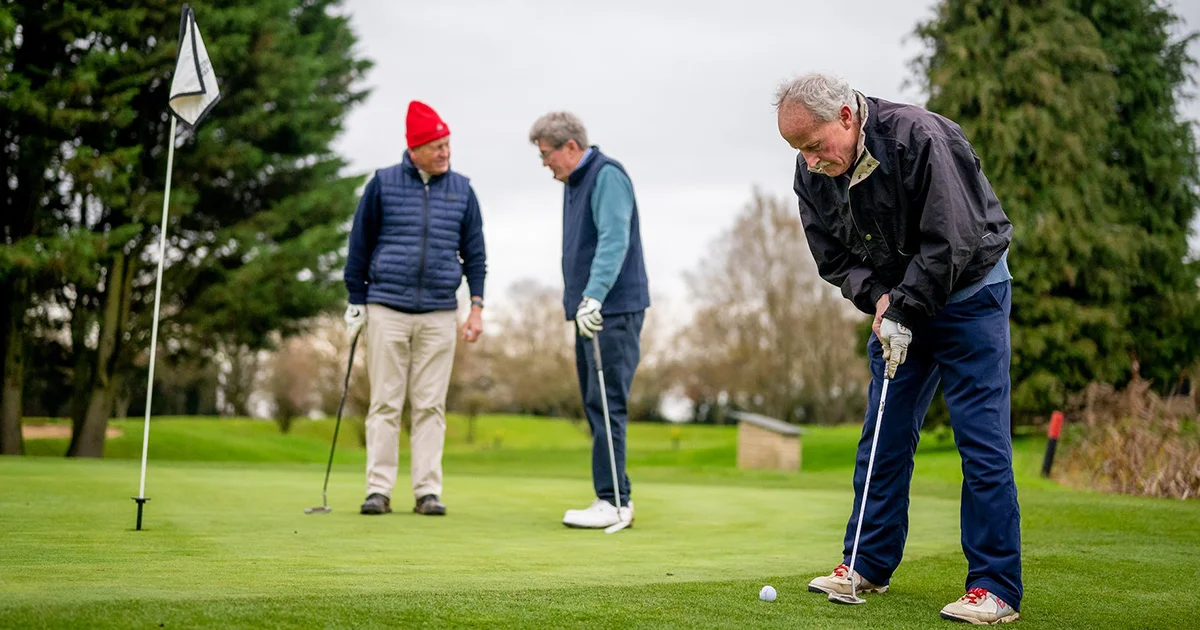As the sun sets and the wind blows across the impeccably groomed greens, a select group of golfers gather on the course to begin their twilight rounds. Armed with years of experience and wisdom, these senior golfers know that the game is more than just a physical challenge; it’s a dance across the green.
Introducing the “Golf club distance chart for seniors.” A compass for the senior golfer who knows the ins and outs of age and accuracy.
When you’re in your golden years, the weight of years of experience is on your shoulders, and every swing becomes a calculated stroke. This specialized distance chart for seniors is designed to help you make the best club choices for varying distances. It’s not just a map; it’s your companion.
If you’re a senior golfer who loves the company of others on the 19th fairway and loves the challenge of mastering the art of your swing, this chart will be your best friend. This chart will become your ally as the sun goes down and the breeze begins to blow through the old trees. While various strategies can be used to increase distance, it is common for golfers to experience a decrease in their average distance. Let’s look at the Golf Club distance Charts for senior golfers who typically hit the ball and advise those experiencing this decrease.
If you’re looking for inspiration, check out our guides on the Best Golf Clubs for Seniors.
Golf club Distance charts – What’s it all about?
Distance Charts indicate the average distance a club covers on a given day. These charts are based on various variables, including gender, age, and experience. It is important to note that no golf club distance chart is intended as a performance measure, as it should be used realistically, considering any limiting factors.
Therefore, if your numbers do not match the charts, focusing on the yardage rather than the distance each club can cover is recommended. For example, a 7 iron may cover the same distance for one person as another, while a 5 iron may not cover the same distance.
Contrary to popular opinion, a long-hitting player does not necessarily have a lower score, as long-hits travel a greater distance than short-hits, and a short-hitter may outdo you. Ultimately, it is a matter of knowledge and skill.
Golf Distance Charts for Senior Men and Women
Let’s begin by examining the average distance covered by younger players from both genders. It indicates a player’s performance when all age-related variables are considered. These figures can be used as a benchmark for a player’s maximum distance.
Golf Club Distance Chart for Men
As a male golfer, you can expect to gain a decent amount of yardage in your shots as you gain experience. The more you practice, the more you can increase your swing speed, essential for hitting fairways and greens. Please look at our article 5 Best Golf Clubs For Short Men.
The following table compares your performance as an average and pro golfer.
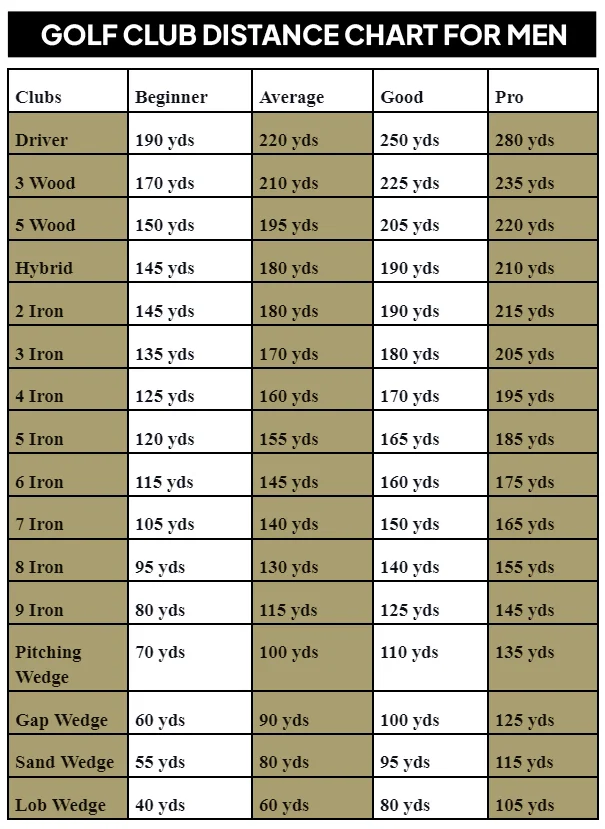
Golf Club Distance Chart for Women
The numbers for female players are significantly lower than those of male players. It is due to various factors, including shorter and thinner clubs and a lower swing speed. Nevertheless, the distances covered are still impressive.
The table below serves as a benchmark for the yardage of female players.
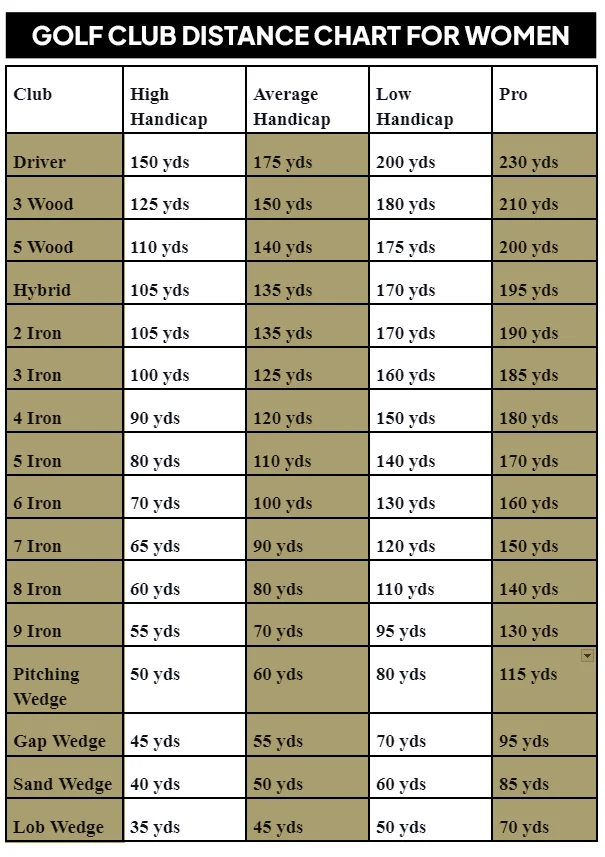
Golf Club Distance Chart for Seniors
If you’re 50 or older, you’re considered a Senior player and can play in the PGA Championship. You don’t have to quit the Tour, but your game will slow down over time compared to younger players. That’s just the way it is.
Here’s a funny fact, though: the world record for the longest drive is still held by Mike Austin, 64 years old, and he hit a drive of 515 yards in 1974! That was way back when there weren’t even SIM 2 golf clubs.
There’s a big difference between senior players and recreational players when it comes to golf club distances. Recreational players are shorter than senior PGA Tour pros, and you can see the difference in the table below.You may like to read Best Light Weight Golf Clubs For Seniors.
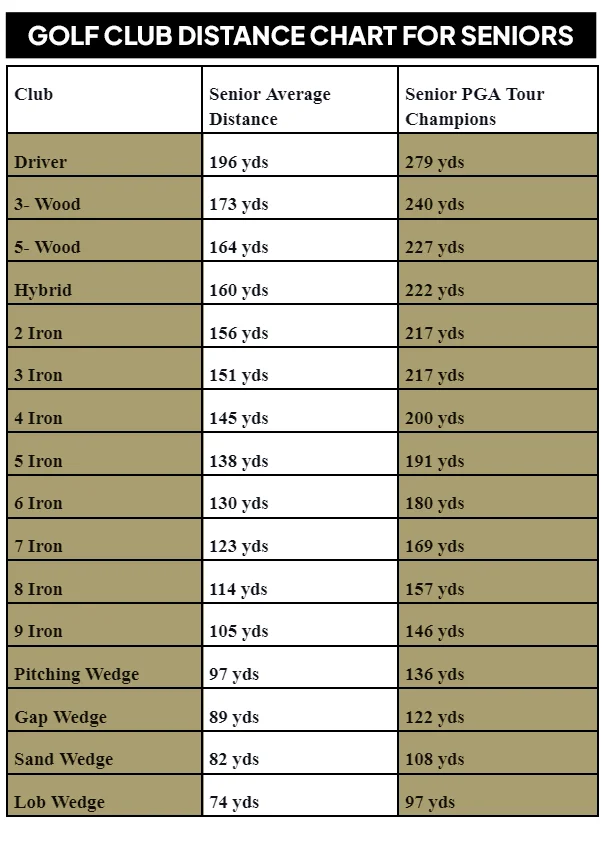
Golf Club Distance Charts by Age, Drivers, Fairway Woods & Irons
The golf distance chart below compares average club distances by age, distinguishing between younger and older players. While professional golfers don’t experience a rapid decline in yardage due to age—thanks to their physical fitness and consistent play—most recreational players will notice a gradual decrease in their shot distances over time.
If you’re looking to maintain or improve your performance as you age, especially off the tee, check out our guide on the best distance drivers for seniors. The table below further illustrates how age impacts average golf club distances. Please note that this chart excludes professional players.

Tips to improve golf distance shots
As you age, many skills you’ve learned will feel outdated. When you’re playing for the first time in a while, it can be hard to play how you used to. Here are a few things you can focus on to help you overcome short-yardage golf.
Proper golf equipment
The quality of your golf balls and clubs can significantly impact your performance. It is important to ensure that you are utilizing clubs that are appropriate for your individual needs and level of play.
If your prior club preference is no longer producing the desired results, it may be beneficial to experiment with other clubs to determine if there is a better fit. The same is true for golf balls. Having the correct driver and irons is just as important as having the right skills.
Golf Grip and Posture
As we age, a golfer’s grip and posture are often overlooked. Players may focus more on stamina and strength, but other factors also impact their performance. A good golf grip assists in transferring power and controlling the ball. Having the right grips for seniors is important, as this may hold them back.
Additionally, standing as tall as possible and bending from the waist rather than the shoulders is important. Posture should also be taken into account, as alignment can be affected by poor posture.
Golf Swing Speed
One of the primary reasons for a decrease in the distance of your shots is the speed of your swing. It is the speed at which your club moves before it reaches the ball. The speed of your swing changes over time. The table below displays the average swing speed of male and female players at various stages of their lives.
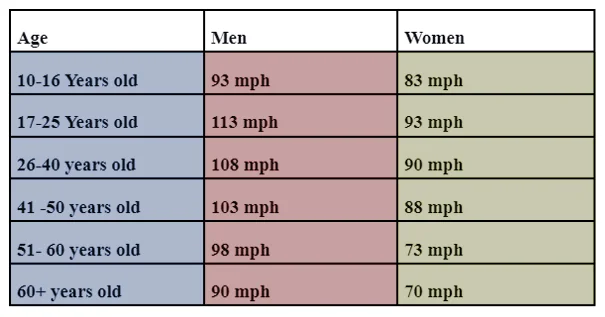
Final Thoughts
There are various elements to consider when determining the average distance of a golf club. The distance debate is not going away; however, one can become a long-hitting individual with the tips provided. Thanks to the rapid development of modern technology, golfers can now hit the ball farther with every club in their bag than ever before.
Average driver distances and swing speeds can increase significantly with the addition of a new club. However, it is important to note that golf club distance is one of many factors to consider, despite what the golfing public may be claiming.
Nothing can replace a strong shot or putting stroke, but it is important to consider the long game in one’s approach and understand that adding distance to one’s game requires effort.
Frequently Asked Questions:
What is the most effective method for measuring average club distances in golf?
Golfers often assume that measuring average club distances involves hitting golf balls on a driving range or measuring club distances using a launch monitor. However, the most accurate method of measuring club distances is tracking shots on a course where players can hit actual shots in actual conditions.
What is an average senior golfer’s swing speed?
An average senior golfer playing on the PGA tours is expected to have a swing speed of 105 to 120 mph. On the other hand, an average senior female golfer has a swing speed of 70 to 75 mph, while an average senior male golfer has a stroke speed of 85 to 90 mph. These swing speeds tend to decrease with age.

